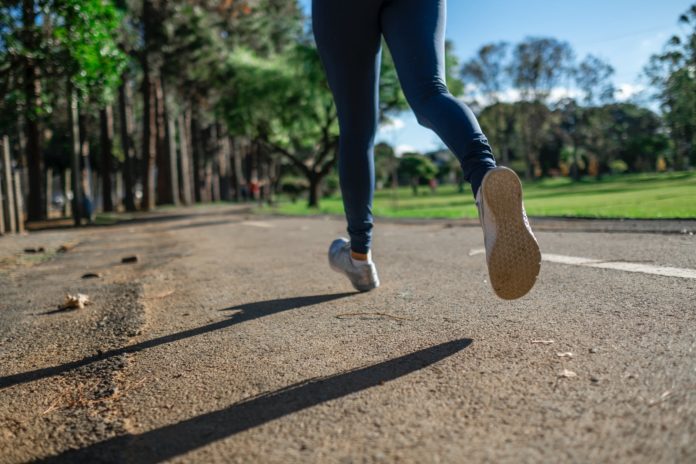Heel pain after running is natural. However, sometimes this pain can be related to structural concerns, improper movement patterns, and plantar fasciitis. Taking care of heel pain is essential to avoid any complications or misalignment.
At times, you’ll only need new insoles in your shoes to treat foot problems, but there are different methods to treat heel pain after running and how to prevent it; keep reading for more.
Causes of heel pain after running
There are several reasons which contribute to heel pain after running. Sometimes the reason can be as simple as reduced motion range or ankle overuse.
Other symptoms can cause muscular imbalance pain, and you are more at risk if you have heavyweight.
People who have flat feet or high arches are prone to more heel pain after running as the foot shape puts excess plantar fascia strain.
Some other reasons for these conditions include:
- Sever’s disease
- nerve irritation
- stress fractures
- arthritis
Read More- Three Sports That Are Superb For Your Overall Fitness
How to treat heel pain after running?
There are many ways to treat your heel pain. If you detect the symptoms early, home treatments are effective.
Take a break
Give a break from running and rest feet when the pain is extreme. Do not resume until the symptoms are gone.
To increase flexibility and relieve pain, follow gentle calf and feet stretching and also do strengthening exercises 2-3 times a day for about 5 minutes.
Use Ice and NSAIDs to reduce Inflammation.
To minimize Inflammation or pain, use an ice pack on heels and surrounding area for 15 to 20 minutes upto three times a day. You can also take over the counter pain relief medicines or try these natural pain relievers:
- fish oil supplements
- turmeric
- cloves
- Self massages
- Acupuncture
Use orthotic inserts or heel pads.
Using wedges, heel pads, and lifts in shoes can add to comfort. A custom orthotic device or over-the-counter machine can help to correct the muscle imbalance and improve stability.
It can also help in keeping your foot from moving too much or making wrong movements. Avoid going barefoot as this can strain heels and cause stress.
Try a removable night splint or walking cast.
If you want to stay off your foot, try using a removable walking cast to support the ankle and foot for a few days. Night splints are also good as they stretch your foot and hold it inappropriate positions when sleeping.
When to see a doctor?
You can treat heel pain by taking preventive measures and home treatments. However, if the symptoms get worse, it is important to visit a doctor. They will help in complete diagnosis and recommend a proper treatment plan like corticosteroid injections. You may also be referred to the ankle and foot surgeon if you require highly uncommon surgery.
If you have severe pain in your heel that can limit your ability to walk or have swelling and redness.
How to avoid heel pain after running?
It is important to take preventive steps to treat your heel pain as the underlying cause may continue. It helps in ensuring that the symptoms do not recur or get worse.
Change foot strike patterns.
You should notice where the foot strikes when hitting the ground. Most people have a rearfoot strike pattern, which can cause heel pain.
Instead of changing to the forefoot or midfoot contact point, see whether it can reduce the impact or ease the pain of your heel. Although this may not work for everyone, you may find that you are putting too much pressure on the outside and inside the feet.
Remember that changing strike patterns can put more stress on your knees and other parts of the foot, which can cause strain.
Choose different running surfaces.
Always run on dirt paths, grass, or synthetic tracks and slowly incorporate hills if given a choice. You should not run on flat hard surfaces like tile floors or concrete.
If you do not have any other choice but only hard surfaces to run on, find shoes that help to absorb shock.
Stretch before and after running
It is essential to warm up before and after running. Stretching can loosen up the muscles in the ankles, feet, and calves. Some easy stretches for your muscles include:
- golf ball rolls
- calf stretches
- foot and ankle stretch
Maintain appropriate weight height ratio
It is important to maintain a healthy weight as a higher weight can put too much pressure on the lower body, especially ankles, heels, and knees, when you run.
Losing excess weight helps to be light on the feet. Also, you will be more balanced and have a healthy movement pattern.
Invest in a new pair of running shoes
Invest in a good pair of running shoes that will support the foot’s structure. Look for shoes with good arch support and an elevated heel so as to put less pressure on the plantar fascia. You can even tape your foot.
Ask a physical therapist or doctor for a recommendation, especially if you are unsure of which shoes to pick.
Read More- What Time Is The Super Bowl?
The takeaway
You should always listen to your body after a good run and make adjustments in your training schedules, especially if you have heel pain after running.
You can ask a friend or trainer to watch your running technique and notice any imbalances which are causing heel pain.
You should take instant measures to treat heel pain and take a break from running if required until the symptoms disappear. Consult your doctor if you are unable to treat the pain.

















